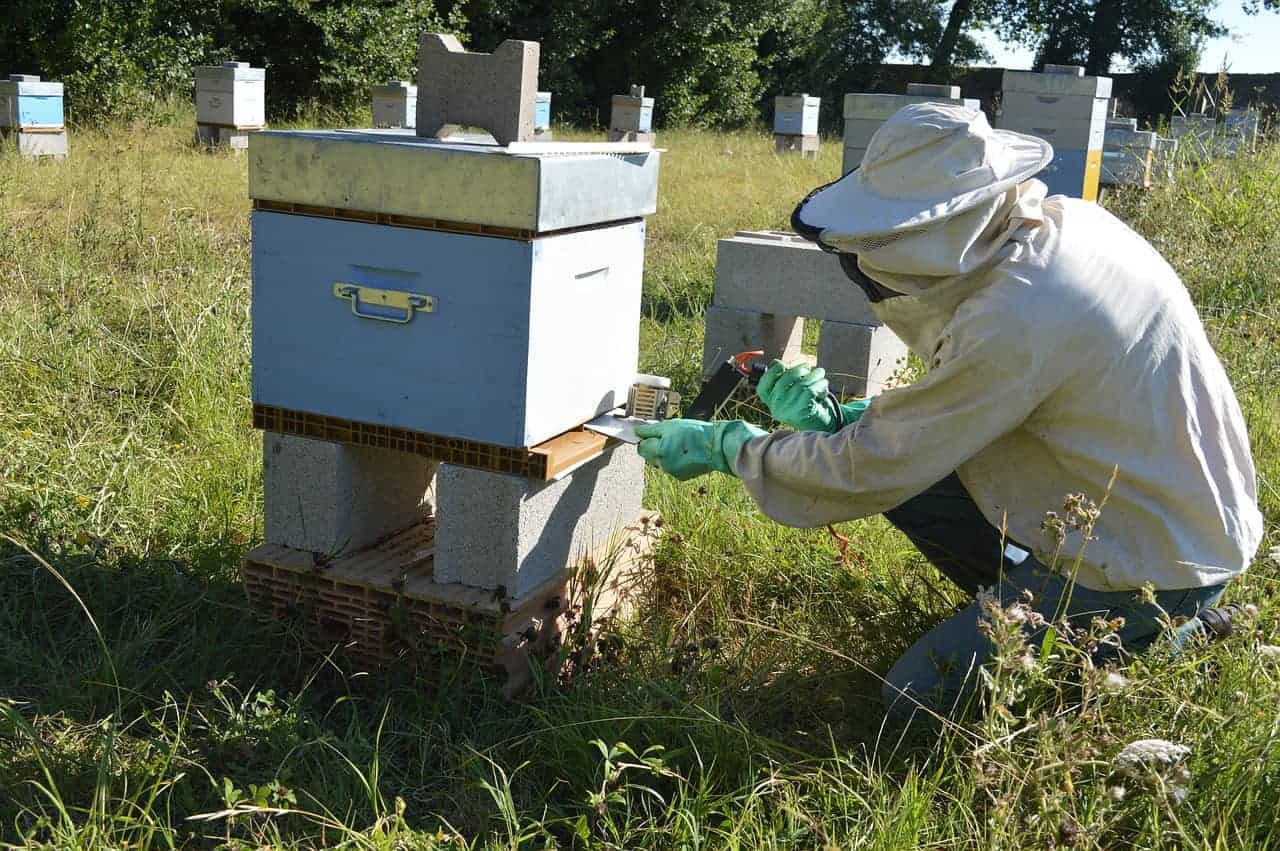Well winter finally caught up to us after milder than normal summer and fall months. Our bees were winding down but it became serious business for them after mid-October now into November rain and colder nighttime temperatures. We should now shut down for any further manipulations with a couple of exceptions.

We can still arrange to put winter “emergency” feed on our colonies. That would be a sugar brick, fondant sugar or dry sugar. These should be fed at the top of the colony. If you use a Vivaldi (quilt) box on top of the colony, put this feed around the hole in the base of the box. You can add a good amount or check on their use of the feed during the winter (on a day when it warms a bit) and replenish as they take it down.
If you use winter insulation use one piece of XPS foam to outline the box, leaving space for the screened insert. Add a 2nd piece of foam to fit on top of the lower foam sheet and the feeding screen insert. If you are using a top moisture trap, then put the emergency dry sugar under the moisture capturing material (burlap, or old towels or bags of wood chips/shaving.) NOTE: John Edwards of Hive and Garden, West Lynn, crafts a deeper Vivaldi Board (to hold more insulation/top moisture trapping material. It has 3 holes in the bottom and a wider screen – see it on his website. It was featured at his display booth at recent OSBA State meeting in Florence).
Todd Bartlem and Elaine Timm will be covering sugar bricks at the regular November WVBA meeting.
The other activity we might consider for our overwintering colonies is to use Oxalic Acid. It can be applied either as a vapor (OAV) or mixed into sugar water as a dribble (OAD). This chemical mite killing tool is most useful when our colonies have no or little capped brood. So the BEST time to use is between Thanksgiving and the New Year. A single application is usually sufficient.
Recent studies on oxalic acid, as reported by Mustafa Bozfas, an OSU MS student from Turkey, illustrated that 3 gm per box offered better mite control without the potential to harm the larval stage of bees that might be present. Not all applicators of OAV will accommodate 6 gms and completely change the crystals to the gaseous form. If liquid remains you are not providing the full fumigation needed.
If you do not systematically weight your colonies in the fall, I recommend you practice hefting hives. On a decent day lift the colony from the back. As the winter starts they should be difficult to raise up. Then continue during the winter. The lifting should become easier. With practice, hefting will help ID colonies that will most benefit from emergency feed. Deadouts may initially seem heavy but with robbing by bees from colonies on days permitting flight, they will become lighter at a faster rate than colonies feeding on their own stores.
Some resources: I worked with a committee of the Honey Bee Health Coalition and revised the Tools for Varroa Management Guide. It is available as free download from HBHC. This is the 8th edition. I will bring some printed copies to distribute at our November meeting. I also revised our Foulbrood leaflet that discusses their ID, how (and why) to get confirmation and information on the need to get veterinarian assistance if you plan to use antibiotics for EFB (we do not recommend antibiotics for AFB since they only mask the disease)
A Beekeeping 101 Newsletter, Backyard Beekeeping, recently included 3 informative articles on Overwintering: Movements of the Winter Cluster, How do bees Survive Winter without Pollen, What Bugs your Bees during Winter . All were written by Rusty Berlow, who is a monthly contributor to Amerivan Bee Journal and popular author of HoneyBee Suite.
NOTE 2: There are a number of informative books entitled Backyard Beekeeping, The one I recommend is by David and Shari Burns (David is EAS Master Beekeeper who administers the Field Exam each year to candidates) Backyard Beekeeping – Everything You Need to Know to Start your First Hive. The recent revised edition of The Backyard Beekeeper – An Absolute Beginners Guide to Keeping Bees in Your Yard or Garden, by former Bee Culture editor Kim Flottum, is a nice incentive as a present to a new beekeeper.
Finally yet another source for good basic information on overwintering is a Best Bees post by Paige Mulhern Beekeeping Tips and Tricks: Overwintering. Best bees established in 2010, originally in Boston, established bees in urban areas for corporate and individual clients. They state they are a “full-service beekeeping operation, making it easy for owners to focus on the charm of their hive while our trained beekeepers ensure its health and success………. Our small, impassioned team of beekeepers brings a scientific know-how and an environmental enthusiasm to the work of connecting our clients with the benefits of beekeeping.” They have interesting zoom presentations as well as useful posts such as this on Overwintering.
